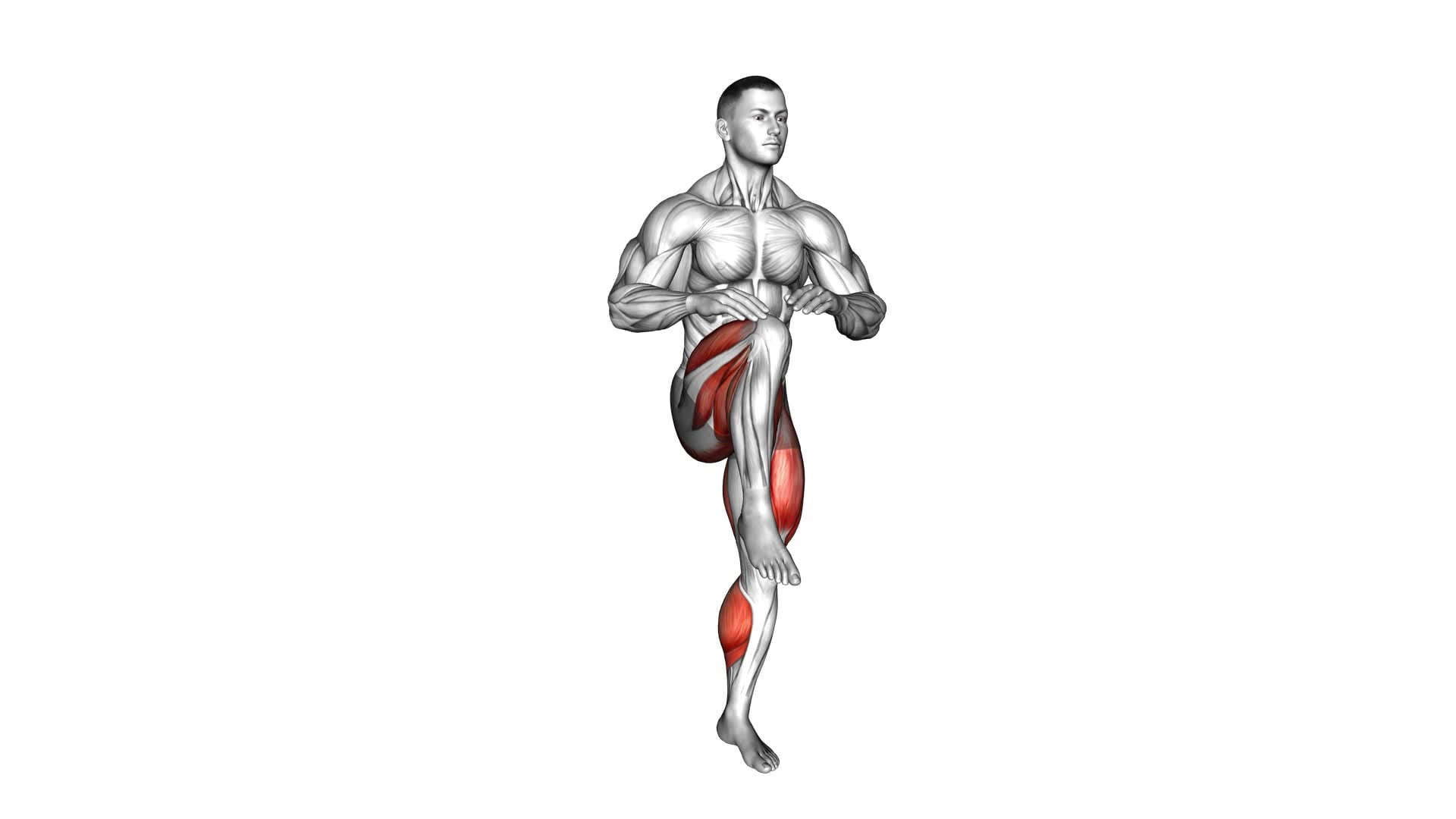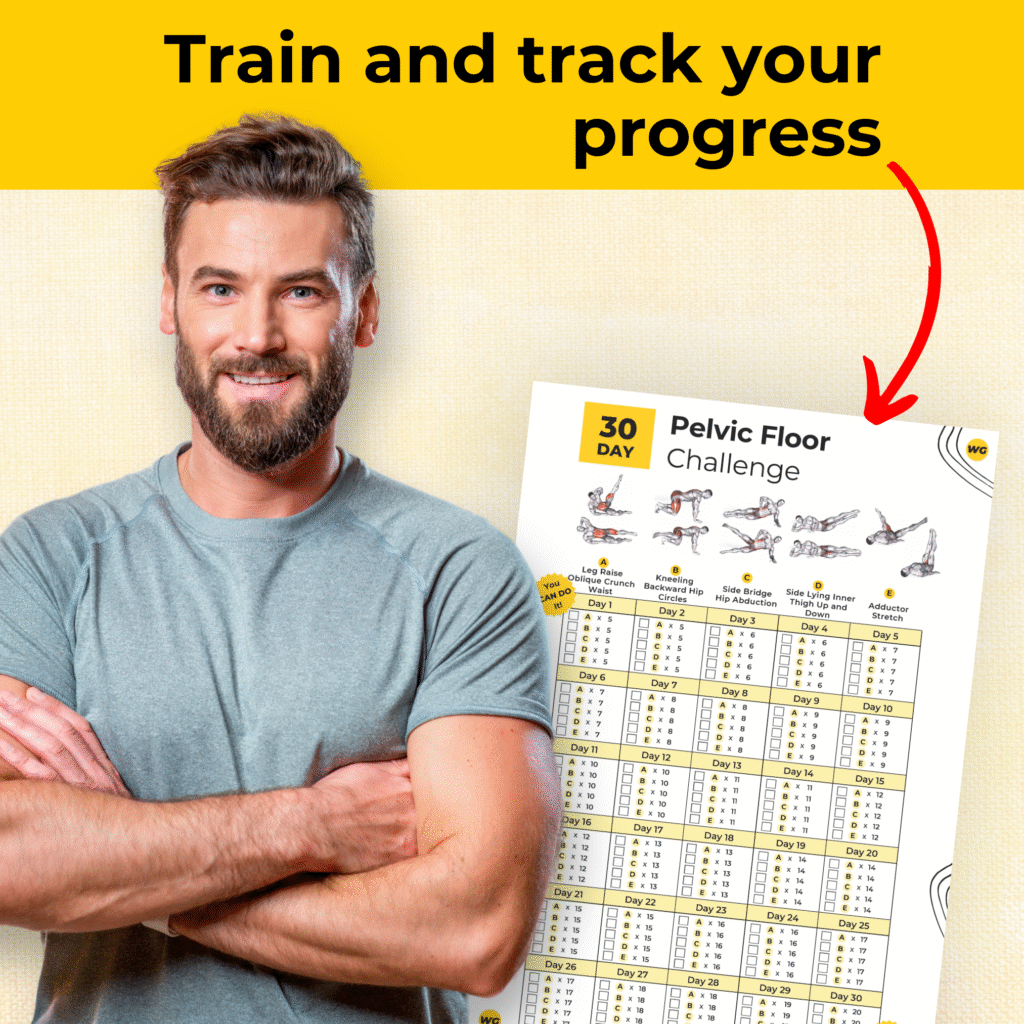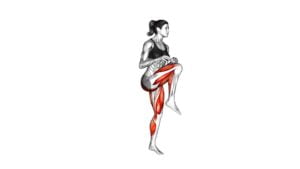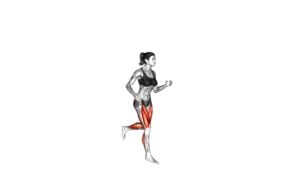High Knee Run (male) – Video Exercise Guide & Tips

Get ready to take your workouts to the next level with the High Knee Run. In this video exercise guide, we'll show you the proper form and technique to maximize your results.
Watch This Exercise Video
You'll learn the benefits of this dynamic exercise, along with common mistakes to avoid. Plus, we'll provide tips for modifying the exercise to suit your fitness level.
Get ready to elevate your cardio and strengthen your lower body with the High Knee Run.
Let's get started!
Key Takeaways
- High Knee Run improves cardiovascular endurance.
- High Knee Run strengthens core muscles.
- High Knee Run activates large muscle groups like quadriceps and hamstrings.
- High Knee Run improves posture and reduces the risk of lower back pain.
Benefits of the High Knee Run
Get ready to experience the numerous benefits of the High Knee Run. This dynamic exercise not only helps to improve cardiovascular endurance but also strengthens your core. By incorporating this exercise into your routine, you can achieve a multitude of fitness goals.
First and foremost, the High Knee Run is an excellent way to boost your cardiovascular endurance. As you lift your knees towards your chest, you engage large muscle groups, such as your quadriceps and hamstrings, which increases your heart rate. This sustained elevation of heart rate helps to improve the efficiency of your cardiovascular system, enabling you to perform better during other forms of aerobic exercise.
Additionally, the High Knee Run is a fantastic exercise for strengthening your core. The movement requires you to engage your abdominal muscles to lift your knees high and maintain balance. By consistently performing this exercise, you can develop a stronger core, which not only enhances your overall stability but also improves your posture and reduces the risk of lower back pain.
Proper Form and Technique
To perform the High Knee Run with proper form and technique, start by standing tall and engaging your core. This will help you maintain stability and balance throughout the exercise.
Here are some key points to keep in mind:
- Lift your knees high: Aim to bring your knees up to hip level with each step. This will activate your hip flexors and improve speed and power in your running stride.
- Pump your arms: As you lift your knees, swing your arms in a coordinated motion. This will help drive the movement and maintain momentum.
- Land softly: Focus on landing on the balls of your feet, rather than your heels. This will reduce the impact on your joints and muscles, allowing you to increase endurance and reduce the risk of injury.
By incorporating these techniques into your High Knee Run, you won't only improve your speed but also increase your endurance.
Remember to start slowly and gradually increase your intensity as your form and technique improve.
Happy running!
Common Mistakes to Avoid
You should avoid these common mistakes when performing the High Knee Run.
- One common mistake isn't keeping your core engaged. Proper form requires you to maintain a strong, stable core throughout the exercise. This helps to stabilize your body and prevents excessive swaying or leaning.
- Another mistake to avoid isn't lifting your knees high enough. The purpose of the high knee run is to engage your hip flexors and increase your heart rate. If you don't lift your knees high enough, you won't be getting the full benefit of the exercise.
- Additionally, be mindful of your arm movement. Make sure to swing your arms in a coordinated motion with your legs, driving them forward and backward to help propel you forward.
- Lastly, avoid rushing through the exercise. It's important to maintain a controlled and steady pace to ensure proper form and maximize the effectiveness of the high knee run.
By avoiding these common mistakes, you'll be able to perform the exercise correctly and achieve the best results.
Now, let's move on to some tips for maximizing your results.
Tips for Maximizing Results
To optimize your results, focus on consistency and intensity during your high knee run. Here are some tips to help you maximize your efforts:
- Maintain a balanced diet: Proper nutrition plays a vital role in achieving your desired results. Ensure you consume a well-rounded diet that includes lean proteins, whole grains, fruits, and vegetables. Stay hydrated by drinking plenty of water throughout the day.
- Warm up before your workout: Performing warm-up exercises before your high knee run helps prepare your muscles and joints for the intense activity. Incorporate dynamic stretches, such as leg swings and hip circles, to increase blood flow and flexibility.
- Gradually increase intensity: Start at a comfortable pace and gradually increase the speed and intensity of your high knee run. Push yourself to go faster and raise your knees higher with each repetition. This will challenge your cardiovascular system and engage your leg muscles more effectively.
Modifications and Variations
To modify and vary your high knee run routine, consider incorporating different exercises and equipment. Adding alternative exercises can help target different muscles and prevent muscle imbalances.
For example, you can try performing high knees on an incline to increase the intensity and engage your glutes and hamstrings more. Another alternative exercise is the mountain climber, which mimics the high knee movement but incorporates a plank position and engages your core muscles as well.
In terms of equipment, you can use resistance bands to add extra resistance and challenge your muscles further. Simply attach the bands around your ankles or thighs and perform the high knee run as usual. This will help strengthen your hip muscles and improve your overall stability.
If you're looking for a low-impact alternative, you can try using a stationary bike or an elliptical machine. These machines provide a similar cardiovascular workout without the impact on your joints.
Remember to consult with a fitness professional before attempting any new exercises or using equipment to ensure proper form and prevent injuries. Incorporating alternative exercises and equipment into your high knee run routine can help keep things interesting and continually challenge your body.
Frequently Asked Questions
How Many Calories Can You Burn by Doing the High Knee Run?
Doing the high knee run can help you burn a significant amount of calories. This exercise is known for its effectiveness in torching calories and boosting your metabolism. By engaging multiple muscles in your legs and core, the high knee run can help you burn calories at a faster rate compared to other exercises.
Additionally, this exercise also improves cardiovascular endurance and strengthens your lower body. Incorporating the high knee run into your fitness routine can provide you with numerous benefits.
Can the High Knee Run Help Improve Your Speed and Agility?
Improving your speed and agility is essential for athletes, and the high knee run can be a helpful exercise. By incorporating this exercise into your training routine, you can enhance your speed and agility.
The high knee run requires you to lift your knees as high as possible while maintaining a quick pace. This movement engages your hip flexors, quads, and core muscles, helping you develop the explosive power needed for quick movements on the field or court.
Is It Safe to Perform the High Knee Run if You Have Knee Problems?
If you have knee problems, you might be wondering if it's safe to perform the high knee run. While the high knee run can be a great exercise for improving speed and agility, it may not be suitable for everyone with knee issues.
It's important to listen to your body and consult with a healthcare professional before attempting this exercise. There are modifications and alternative exercises available that can help you work on your speed and agility without putting excessive strain on your knees.
Can the High Knee Run Be Incorporated Into a HIIT (High-Intensity Interval Training) Workout?
Incorporating the high knee run into your HIIT routine can be a great way to add intensity and challenge to your workout. It helps to elevate your heart rate and engage multiple muscle groups.
There are also variations of the high knee run that you can try, such as adding a jump or holding weights, for an even more challenging workout.
Just remember to listen to your body and modify or skip this exercise if you have knee problems.
What Other Exercises Can Be Combined With the High Knee Run for a Full-Body Workout?
To create a full-body workout using the high knee run, you can combine it with exercises like burpees, mountain climbers, and jump squats. These combinations will help you engage multiple muscle groups and increase your heart rate for a more effective workout.
The high knee run itself targets your lower body, specifically your quadriceps, hamstrings, and glutes. By combining it with other exercises, you can maximize the benefits of the high knee run and achieve a well-rounded workout.
Conclusion
In conclusion, incorporating the high knee run into your exercise routine can provide numerous benefits. These include improved cardiovascular endurance, leg strength, and coordination. By maintaining proper form and technique, avoiding common mistakes, and following the tips provided, you can maximize the results of this exercise.
Additionally, don't be afraid to explore modifications and variations to keep the workout challenging and engaging. So lace up your sneakers and get ready to elevate your fitness level with the high knee run.

Author
Years ago, the spark of my life’s passion ignited in my mind the moment I stepped into the local gym for the first time. The inaugural bead of perspiration, the initial endeavor, the very first surge of endorphins, and a sense of pride that washed over me post-workout marked the beginning of my deep-seated interest in strength sports, fitness, and sports nutrition. This very curiosity blossomed rapidly into a profound fascination, propelling me to earn a Master’s degree in Physical Education from the Academy of Physical Education in Krakow, followed by a Sports Manager diploma from the Jagiellonian University. My journey of growth led me to gain more specialized qualifications, such as being a certified personal trainer with a focus on sports dietetics, a lifeguard, and an instructor for wellness and corrective gymnastics. Theoretical knowledge paired seamlessly with practical experience, reinforcing my belief that the transformation of individuals under my guidance was also a reflection of my personal growth. This belief holds true even today. Each day, I strive to push the boundaries and explore new realms. These realms gently elevate me to greater heights. The unique combination of passion for my field and the continuous quest for growth fuels my drive to break new ground.







